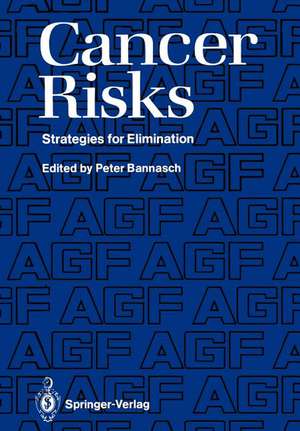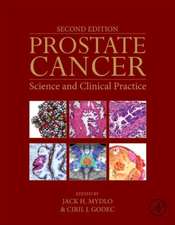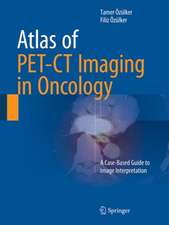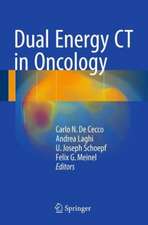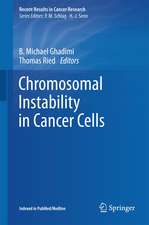Cancer Risks: Strategies for Elimination
Editat de Peter Bannaschen Limba Engleză Paperback – 23 mar 1987
Preț: 712.97 lei
Preț vechi: 750.50 lei
-5% Nou
Puncte Express: 1069
Preț estimativ în valută:
136.44€ • 148.16$ • 114.61£
136.44€ • 148.16$ • 114.61£
Carte tipărită la comandă
Livrare economică 23 aprilie-07 mai
Preluare comenzi: 021 569.72.76
Specificații
ISBN-13: 9783540174653
ISBN-10: 3540174656
Pagini: 216
Ilustrații: XIII, 199 p. 2 illus.
Dimensiuni: 170 x 244 x 11 mm
Greutate: 0.35 kg
Editura: Springer Berlin, Heidelberg
Colecția Springer
Locul publicării:Berlin, Heidelberg, Germany
ISBN-10: 3540174656
Pagini: 216
Ilustrații: XIII, 199 p. 2 illus.
Dimensiuni: 170 x 244 x 11 mm
Greutate: 0.35 kg
Editura: Springer Berlin, Heidelberg
Colecția Springer
Locul publicării:Berlin, Heidelberg, Germany
Public țintă
ResearchDescriere
A large body of information about possible causes of cancer has been ac cumulated by both clinical experience in man and observations in animal experiments. There is general agreement that in most cases cancer is due to exogenous factors, albeit the genetic disposition may also play an impor tant part. Three main categories of exogenous risk factors have been iden tified, namely chemicals, radiation, and viruses. In principle, it should be possible to prevent cancer by eliminating such risk factors. However, in spite of the rapidly growing number of well established risk factors, many shortcomings in our understanding of the causes of human cancer and in the introduction of effective preventive measures are evident. In addition to obvious gaps in our scientific knowledge, inadequacies in personal life style, irresponsible handling of environmental contaminants, and in some areas also deficiencies in political decisions seriously hamper the elimina tion of risk factors for cancer. It was this background which prompted the Committee coordinating Cancer Research in the GroBforschungseinrichtungen in the Federal Re public of Germany to organize a conference on Strategies for the Elimina tion of Cancer Risks. The conference was held in Heidelberg in June 1986. In areas which appeared to be especially pertinent to public health, author itative speakers presented the state of the art and prepared the basis for the discussion. Both the presentations of the speakers and the summaries of the discussions are contained in this book.
Cuprins
Session 1 General Aspects.- Genetic Predisposition for Cancer Risks in Man.- The Role of Epidemiology in the Detection and Reduction of Cancer Risks.- Summary of Discussion: Session 1.- Session 2 Chemical Carcinogens: Risk Assessment.- Assessment of Cancer Risk from Chemicals.- Validity of Short-Term Tests to Detect Carcinogenic Chemicals (With 5 Figures).- Preneoplastic Lesions as Indicators of the Carcinogenic Risk Caused by Chemicals (With 6 Figures).- Carcinogenic Risk Assessment: Are Animals Good Surrogates for Man?.- Summary of Discussion: Session 2.- Session 3 Chemical Carcinogens: Primary Prevention.- Possibilities of Primary Prevention Against Chemical Carcinogens (With 3 Figures).- Primary Prevention Against Occupational Carcinogens.- Chemical Carcinogens in Tobacco (With 4 Figures).- Primary Prevention of Tobacco-Related Cancer (With 6 Figures).- Summary of Discussion: Session 3.- Session 4 Physical Carcinogens.- Cancer Risk from Ultraviolet Radiation.- Assessment of Cancer Risks Due to Ionizing Radiations (With 1 Figure).- Cancer Risk from Environmental Radioactivity (With 5 Figures).- Summary of Discussion: Session 4.- Session 5 Oncogenic Viruses.- Viruses in Human Tumors (With 1 Figure).- Strategies in the Prevention of Infections by Oncogenic Viruses (With 3 Figures).- Summary of Discussion: Session 5.- Summary of Round Table Discussion on Strategies Against Tobacco Cancer.
